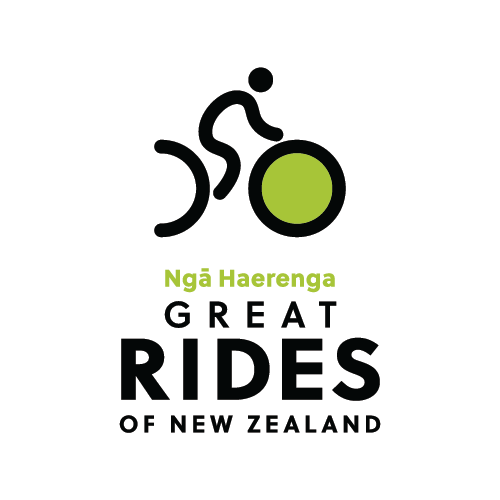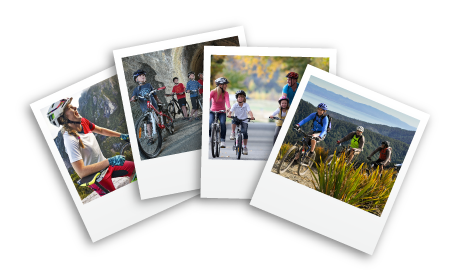Trail alert - the full St James Cycle Trail loop is currently closed. The McArthur bridge was damaged during flooding and has been removed. Riders cannot cross the Waiau River at the 36km mark. The new bridge is scheduled to be constructed by the end of 2024.
The Homestead Loop is open, as is access from Fowlers Pass and Maling Pass. For updates, visit the DOC website.
An important travel route for early Māori, the remote St James Cycle Trail is a challenging journey through magnificent high country complete with soaring peaks, broad river valleys and rustic farming heritage.
Centred on the vast Clarence and Waiau valleys, the whopping 78,000-hectare St James Station was one of New Zealand’s largest high country farms, dating back to 1862. When it passed into the care of the Department of Conservation in 2008, it became the setting for one of the country’s finest mountain bike trails.
Testament to the farm’s former glories, well-preserved buildings and fences add a human element to landscapes of overwhelming natural grandeur. Vast valleys flanked by rugged mountain ranges usher riders through golden meadows and sweet beech forest, over crystal clear rivers, into hidden lakes, and past a series of rustic huts offering shelter from the elements. A two-day trip is highly recommended, although hardy types have been known to complete it in one day.
The St James Cycle Trail is generally ridden from November through April/May. Outside of these times, challenging winter conditions prevail and the trail is often inaccessible. It's important that people check the trail and weather conditions with the local Department of Conservation office. The Homestead Run Loop (described in the Day Rides section below) is generally a good option during the winter months and for those wanting a taste of this spectacular environment.
- jaw-dropping mountain vistas
- pastoral high-country history
- rustic backcountry huts
- golden alpine grasslands
- mirror-like Lake Guyon
- critters of forest & meadow
- humbling solitude
- hot pools just off the Edwards Valley Track
- wild horses grazing the meadows
While fit riders can complete the St James Cycle Trail in one day, an overnight trip is highly recommended as it allows more time to linger in places like Lake Guyon and enjoy the simple pleasures of camping or rustic huts. Sunset and sunrise are big-time bonuses.
It’s a 13km drive from Hanmer Springs to the St James Conservation Area and Homestead, site of the trail’s main car park and the common end-point for what is essentially a loop. The road over Jacks Pass is a narrow and windy shingle road – allow plenty of time.
While it’s possible to ride the extra 25km from there to the official trailhead at Maling car park (along Tophouse Road), it’s more common to get shuttled to Maling car park (with the shuttle meeting you at the Homestead or driving you all the way in from Hanmer Springs).
While the trail can be ridden in either direction, the Maling start offers more downhill overall along with favourable prevailing winds.
Experienced backcountry bike-packers should also note that the St James can be linked with The Rainbow and Molesworth Muster rides for much longer and even more challenging adventures. The ride also connects with the Hurunui Trail Heartland Ride (Kaikoura to Christchurch) with a short 33km section on SH7 and SH7a.
Maling Pass car park—Waiau 4WD Road End
12km, Grade 3/intermediate to Grade 4/advanced, 1–1.5 hours
Those with a sense of adventure will feel pretty excited as they head off on the 4WD track into instantly big-hitting vistas. There are glimpses of Lake Tennyson as the trail winds steadily around the foothills of the St James range, climbing 250m over 6km to reach Maling Pass.
A pretty big reveal from the highpoint (1308m) grows ever greater on the descent, which winds down through alpine tussock and beech forest, and passes an 1889 rabbit-proof fence long-since breached by the bunny brigade.
On the floor of the valley, the 4WD track levels out and comes to an end along the east bank of the Waiau River. If you’re not wowed by now, there’s no hope for you!
Waiau 4WD road end—Saddle Spur Bridge
15.5km, Grade 3/intermediate, 1.5–2.5 hours
This section of trail starts out on a purpose-built cycle track that soon emerges into wide river terraces near the junction with the sidetrack to Lake Guyon.
It’s well worth riding the extra 20 minutes or so each way (5km in all) to Lake Guyon hut, as it takes in different vantages of the incredibly pretty lake and surrounds. The old hut is also a particularly nice spot for a break from the bike with the opportunity for a cooling dip – even if it’s just a toe.
Back on the main trail, riders follow the old stock and farm tracks meandering down valley over the grassy river flats, passing by Little Lake and Muddy Lakes before arriving at the spectacular Saddle Spur Bridge.
A herd of wild horses inhabit this area and can often be seen grazing the river flats.
Saddle Spur Bridge—Scotties Hut
TRAIL ALERT: McArthur Bridge has been removed due to storm damage, and is now scheduled to be replaced by the end of 2023. The full trail loop cannot be safely completed currently, but is open and rideable from either end of the trail.
14.5km, Grade 4/advanced to Grade 5/expert, 2–3 hours
This is the most challenging section of the trail, with 240 metres of climbing made all the more testing by some rocky and uneven terrain. Some narrow downhill sections and steep drop-offs require particular care, especially as any uncontrolled dismount may see you plough headlong into thorny matagouri.
Having crossed to the river’s western side via the bridge over a stunning rocky gorge, riders are faced with the push over Saddle Spur. Down the other side, the track meanders another 5km or so to Pool Hut – micro-sized and a little bit mousey but well positioned around the middle of the trail.
The trail then crosses the McArthur Bridge, and follows an old farm track up a series of terraces before winding steeply to Charlies Saddle. The changing views are to die for; the climb you will survive.
An invigorating descent leads to bridge over the Edwards River and the hunters’ haven, Scotties Hut.
Scotties Hut—St James Homestead
17km, Grade 3 intermediate, 1.5–2.5 hours
A 4WD track leads up the meadow-lined Edwards Valley, with the terrain generally smooth save for short stretches of rocky riverbed and four unbridged stream crossings. A worthwhile 10-minute detour leads to Cow Stream hot springs.
The trail makes its final sizeable climb out of the valley to reach Peters Pass, from where an easy downhill run wends down the smaller but no less beautiful Peters Valley. A series of farm fences signals the approach to St James Homestead, which appears straight out of the pages of New Zealand’s high country farming history. Be sure to nosy around the old farm buildings before you leave.
The full St James can be completed in one day by fit riders – to whom we say go well and good luck and we hope you’ve got plenty of muscle rub.
Riders looking for a smaller bite of the trail should look no further than these…
Homestead Run Loop
15km, Grade 3 intermediate, allow 2–3 hours
This is a good option for those wanting a taste of the St James Conservation Area, and is suitable for riders of many ages and abilities. Starting at the Homestead – a cluster of rustic old farm buildings well worth driving in to see, even if you don’t ride – the trail heads up the beautiful Peters Valley to Peters Pass where there are great picnic spots overlooking Waterfall Stream. The trail then meets the Edwards Valley 4WD track, which follows the valley eastwards to hit Tophouse Road from where it’s 3km back to the Homestead.
Cow Stream return ride
32km return, Grade 3–4 intermediate–advanced, allow 2–3 hours
Another option is the return ride from the Homestead to Cow Stream, where blissful hot water bubbles into natural pools. This is a pretty decent day out for bikers (and fully charged e-bikers), with mostly intermediate grade trail with one steep advanced (grade 4) section. But a soak in the hot pools should prove ample reward!
TRAIL STATUS & ALERTS
For current trail status and any alerts – such as temporary track closures and detours – check DOC's trail website.
FITNESS & SKILLS
The trail is best suited to fit, experienced mountain bikers, the most eager of whom can complete the trail in one long (6–9 hour) day. A two-day trip, stopping overnight in campsites or one of three huts, will allow much greater appreciation of the scenery along with a chance to enjoy a starry night and the early morning light in this special environment.
While the first and final sections of the trail are grade 2–3 (easy–intermediate), some grade 4 (advanced) terrain around the middle serves up rocky and uneven surfaces, narrow stretches with steep descents and sheer drop-offs, and thorny matagouri bushes to contend with. Riders may need to push their bikes in places.
TYPE OF BIKE
A high-quality, ship-shape mountain bike is essential, and riders should ideally have basic mechanical skills and carry a tool kit, too.
Pedal-assist e-mountain bikes are permitted on the St James Cycle Trail with the following advisory:
- Trail length and elevation gain are on the cusp of many pedal-assist e-MTB battery capacities and there are no charging facilities along the trail – riders need to plan and provision for spare battery capacity
- Carrying/lifting and/or pushing e-MTBs may be required in places – riders must be physically capable of this
- The St James Cycle Trail is only suitable for rugged (all-mountain) e-MTBs – sit-up/urban style e-bikes are considered unsuitable
- Responsibility for e-bike use on the St James remains with the individual rider.
MAPS & NAVIGATION
Although the trail is well signposted, carrying a map will guarantee against taking a wrong turn and help with ride timings and identification of major landmarks. While DOC’s map will suffice, a detailed topographical map will be much enjoyed by geography geeks – there are some very shapely landforms to look at. A GARMIN-style personal locator beacon (PLB) with mapping function is ideal.
You can also download the awesome Great Rides App to see where you are on the trail. It's free, works offline and has heaps of useful information, including trail descriptions and photos, trail services, food and accommodation.
WEATHER & RIDING SEASON
Spring is a good time to ride, when the alpine meadows are in full bloom. November to April is the most popular, when longer days allow maximum exposure to rich high country colours. (The writers of this text rode in May when there were very few people around a crunchy morning frost to start the second day. It was both invigorating and utterly stunning.)
It must be stressed that this trail travels through a remote, alpine environment subject to weather extremes, flooded rivers and avalanches.
It is recommended that riders check in with the local Department of Conservation office for the latest track conditions and weather forecast, and let someone know their intended route and return date. This is particularly important from June through October when winter weather conditions prevail and the trail may be impassable. If there is any doubt whatsoever about potential river levels, riders should bring sufficient food and equipment for an unscheduled overnight stay.
Riders should also carry appropriate clothing for all eventualities, including wet-weather gear, no matter what time of year.
FOOD & WATER
This trail heads through seriously remote country with no food supplies, so be sure to carry in all necessary provisions allowing sufficient for an unplanned night (or extra night) on the trail.
Water is available at various points along the trail, most easily accessible near the huts; note that boiling or treating it is recommended. Be sure to carry plenty, particularly in high summer.
CAMPSITES, SHELTERS & TOILETS
As detailed on the DOC website and map, camping areas and toilets are provided at St James Homestead, Lake Tennyson, and numerous other spots along the trail. Overnight shelter is offered at the three huts. Pool and Scotties huts are basic (free) with bunks allocated on a first-come, first-served basis. Lake Guyon Hut is a standard hut ($5/adult/night; $2.50/night for youth). Purchase hut tickets before you leave from any DOC office/visitor centre or the Hanmer Springs i-SITE.
CELLPHONE COVERAGE
Cellphone coverage is lost once you go over Jacks Pass from Hanmer Springs. Due to the remote nature of the trail, riders should consider taking a personal locator beacon (PLB) or hire one from Christchurch – there is no hire option in Hanmer Springs. A GARMIN-style PLB with maps is ideal.
DOGS & HORSES
Dogs and horses are allowed in the St James Conservation Area (see the DOC website for more details). Dogs must be kept under control at all times, and are not allowed in huts.
Hanmer Springs is the trail’s closest town, and a popular destination for both domestic and international travellers. As such it boasts all sorts of useful services but gets busy during summer, especially during January and public holiday weekends to the end of Easter. It will pay to book accommodation and services well in advance during Hanmer Spring’s peak (January–April).
GETTING HERE
Hanmer Springs is the gateway to the St James Conservation Area. It is commonly reached by self-drive road trip, but is also serviced by Nationwide Intercity buses services and smaller local shuttle operators.
Christchurch International Airport is around two hours' drive away. The interisland ferry port of Picton is four hours' drive away via SH1.
Hanmer Springs can be factored into fantastic road trips around the top of the South Island, taking in such highlights as the Marlborough Sounds and wine country, Nelson, Kaikoura, and the West Coast via Lewis and Arthur’s Passes.
BIKE HIRE, TRANSPORT & TOURS
The trail starts and finishes on the remote Tophouse Road, around 13km drive from Hamner Springs. Those self-driving should note that the journey there follows backcountry gravel roads with narrow sections, blind corners, and dust from other vehicles that can severely reduce visibility. The road is also shared with cyclists and horse riders, so caution is advised.
Shuttle transport and bike hire is available from Hanmer Springs. National bike tour companies offer customised tours of popular South Island cycle trails including the St James, Queen Charlotte Track, Tasman’s Great Taste Trail and West Coast Wilderness Trail. Christchurch is a popular departure point.
ACCOMMODATION
There are three very basic Department of Conservation huts along the trail: Lake Guyon, Pool and Scotties. There are also numerous wilderness camping sites.
The resort town of Hanmer Springs makes an excellent stop either before or after, with a wide range of accommodation as well as a popular spa and hot pools complex. This is also a good place to stock up on essential food and bike supplies.
The Hanmer Springs i-SITE is a great source of information local attractions, bookings, and to purchase hut tickets if planning on staying in the Guyon Hut.
VISITOR INFORMATION



